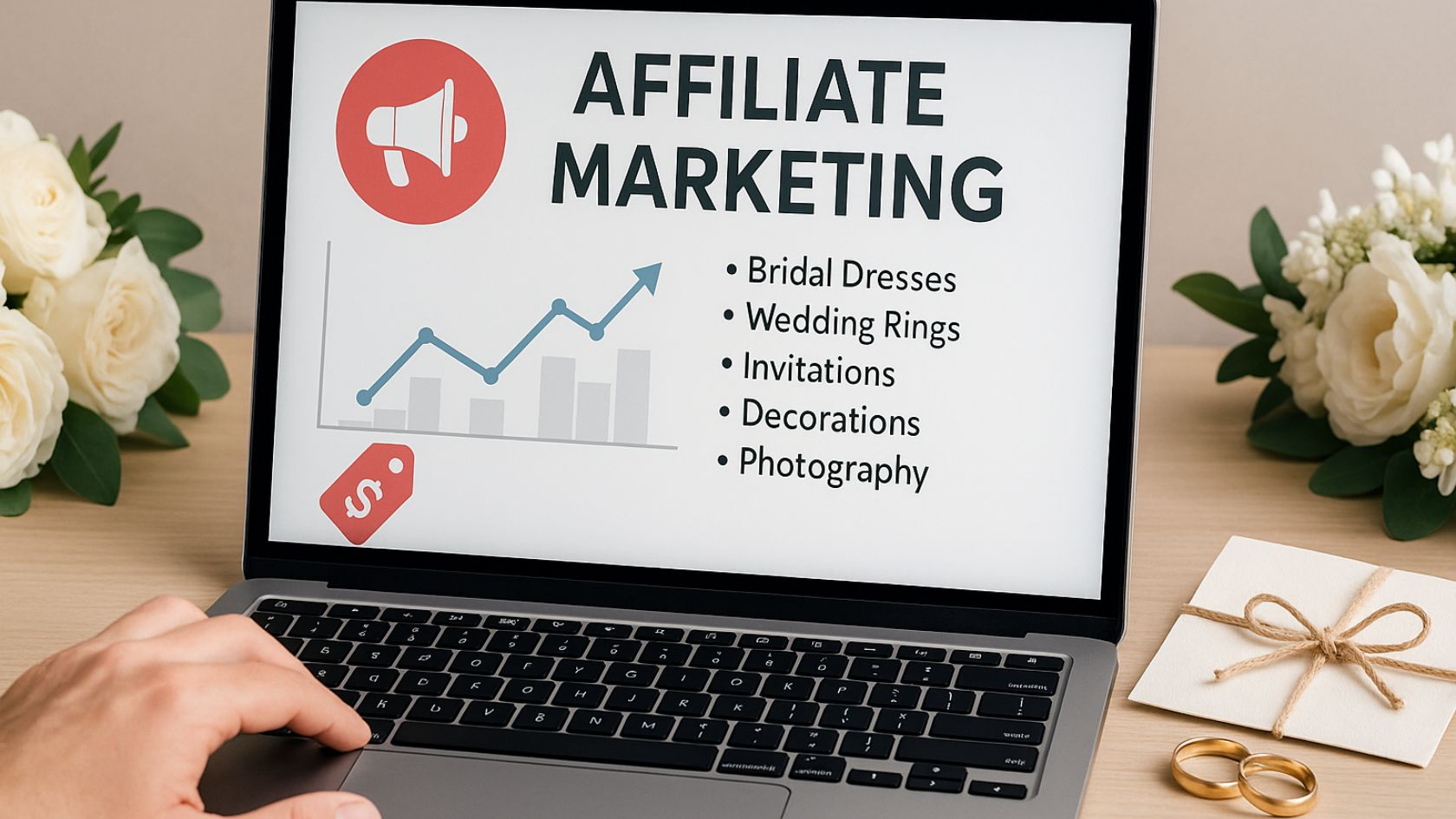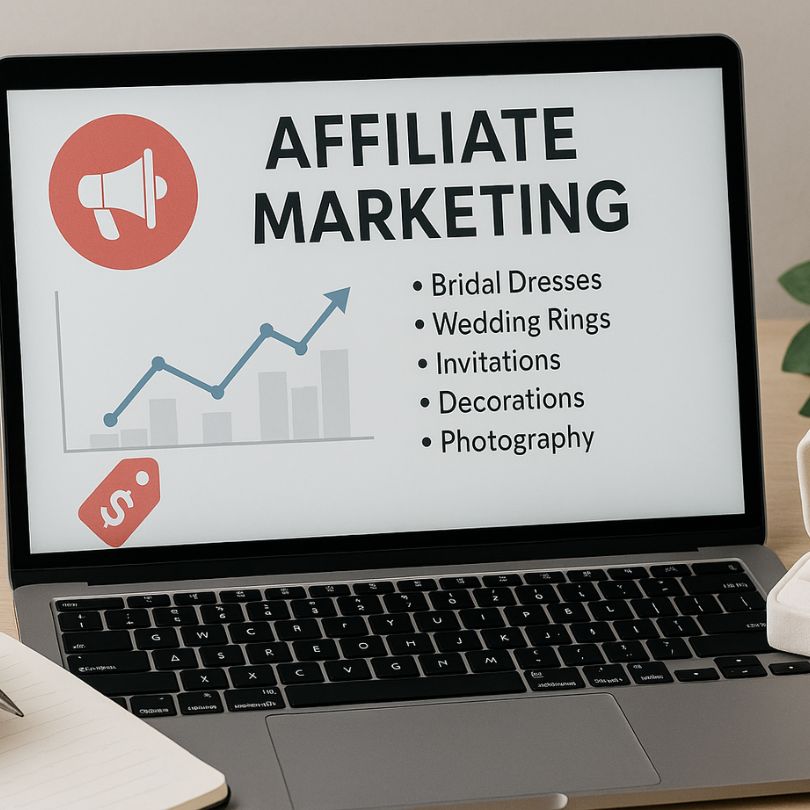
Best Wedding Affiliate Programs: Top Programs in the Wedding Niche

The best wedding affiliate programs can turn your passion for ceremonies, planning, and beautiful storytelling into a dependable revenue stream—if you know how to evaluate offers, create targeted content, and build trust at every step of the couple’s journey.
The wedding market is a high-intent, time-bound niche where buyers actively compare options across attire, jewelry, stationery, venues, photography, websites, registries, and travel. If you’re a creator, planner, photographer, or niche publisher, you can earn commissions by recommending products couples already plan to buy. To spark content ideas, review curated wedding niche ideas that dovetail with common purchase moments.
How to Evaluate Wedding Affiliate Programs (Quick Framework)
Before you apply or publish, use this simple checklist to pick programs that match your audience and maximize earnings without sacrificing trust.
Seasonality matters in weddings. Publish evergreen content year‑round and create supplementary pieces that target peak shopping windows (engagement season, spring/summer weddings, gifting holidays). Studying successful holiday campaigns—even outside the wedding niche—can sharpen your timing and messaging; for instance, browse detailed seasonal marketing playbooks to plan launches and promos.
- Relevance to intent: Does the program serve a clear moment in the planning journey (proposal, engagement party, attire, invitations, registry, honeymoon)?
- Commission + cookie: Balance rate and cookie length. Longer cookies help with research-heavy items (rings, venues) where decisions take weeks.
- EPC and conversion: Programs with proven conversions often provide optimized landing pages, bundles, and financing options.
- Brand fit & trust: Look for strong ratings, transparent policies, and generous return windows—these reduce friction for buyers.
- Creative support: Good partners offer deep product feeds, lifestyle images, and ready‑made banners you can adapt.
- Attribution clarity: Ensure last‑click vs. multi‑touch rules are documented; ask for cross‑device tracking if possible.
Pro tip: Build a short‑list of 3–5 offers per content theme (e.g., 3 invitation providers, 4 ring retailers). Test links in your top pages for 14–28 days and keep the top converter in each spot.
Top Categories and Standout Program Types
1) Engagement & Wedding Rings
High AOV and longer consideration cycles. Feature guides on diamond basics, lab‑grown vs. mined, metal types, and ring sizing. Include interactive elements (calculators, comparison tables) to keep shoppers on page.
2) Bridal Attire & Accessories
Include try‑at‑home programs, alteration policies, size inclusivity, and shipping timelines. Add “complete the look” carousels for veils, shoes, belts, and jewelry.
3) Stationery, Invites, and Websites
Couples often buy invitations, thank‑you cards, signage, and guest books together. Website builders and RSVP tools bundle nicely with stationery and seating chart apps.
4) Registry Platforms
Registries can drive repeat clicks as couples add items over time. Cover completion discounts, group gifting, returns, and out‑of‑stock handling.
5) Photography & Videography Gear
For creator audiences: lenses, gimbals, flashes, audio kits, and editing software. Pair gear reviews with “wedding‑day settings” cheat sheets.
6) Beauty, Wellness, and Grooming
Bundles sell: skincare systems, hair tools, fragrance, and emergency kits. Compare trial sizes vs. full bottles and travel‑friendly sets for destination weddings.
7) Travel, Honeymoon, and Experiences
Earn on flights, hotels, excursions, and insurance. Destination content (itineraries, packing lists, budgets) converts well on mobile.
8) Décor, Rentals, and Services
Roundups for lighting, arches, linens, and chair covers pair well with local vendor directories and checklists for DIY weddings.
Where to find programs: Search major affiliate networks (Impact, CJ, ShareASale, Awin, Rakuten) plus direct brand sign‑ups. Shortlist brands your audience already trusts and test multiple landing pages for the same product category.
Step‑by‑Step: Launch a Wedding Affiliate Funnel in 7 Days
- Day 1 — Map intent: Choose one micro‑moment: “engagement ring basics,” “budget wedding invitations,” or “all‑inclusive honeymoon in Bali.” List 10 subtopics and FAQs.
- Day 2 — Pick partners: Join 3–5 relevant programs (one premium, one budget, one mid‑range, plus a marketplace). Collect links and creatives.
- Day 3 — Draft pillar + two helpers: Create one 1,500‑word guide (definitions, comparisons, picks, steps) and two helper posts (e.g., sizing chart, checklist). Interlink them.
- Day 4 — Add comparison blocks: Insert scannable tables (features, policies, shipping, returns). Include a mini “Who it’s for” box per pick.
- Day 5 — On‑page SEO polish: Craft benefit‑led H1/H2s, include synonyms, compress images, add descriptive alt text, and set internal links from older posts.
- Day 6 — Launch + index: Publish, request indexing, submit URL in your sitemap, and share on social (Pinterest, Instagram, TikTok) with story‑first hooks.
- Day 7 — Measure + iterate: Track CTR, scroll depth, and outbound clicks. Swap underperforming links and reposition comparison boxes higher on the page.
Template idea: Add a “Budget / Mid‑Range / Luxury” toggle above your picks so couples can switch pricing tiers without leaving the page. This improves time on page and outbound click quality.
SEO and Content Strategy Tips That Actually Move the Needle
Match Intent With Format
- Transactional intent: Use “best,” “review,” and “vs.” in H2s. Lead with 3–5 curated picks and surface your top choice above the fold.
- Informational intent: Glossaries, sizing guides, timelines, and budget breakdowns build trust that converts later.
- Local intent: Create city/venue‑specific checklists and vendor directories, then link out to relevant offers.
Boost Click‑Through Rate (CTR)
- Write meta titles with benefits + urgency (e.g., “Save on Lab‑Grown Diamonds: 7 Trusted Retailers Compared”).
- Use descriptive anchor text (“Compare invitation paper types”) instead of generic “click here.”
- Place your best pick near the top with a one‑sentence why: “Best for customization,” “Fastest shipping,” etc.
Increase On‑Page Conversions
- Add sticky CTAs that follow scroll on mobile.
- Use trust badges sparingly (warranty, free returns, financing).
- Address objections right beside the CTA: sizing, shipping times, alteration policies, and refund windows.
Content You Can Publish This Month
- “Lab‑Grown vs. Mined Diamonds: Pros, Cons, and Cost Breakdown.”
- “Engagement Ring Size Guide + Printable Sizer.”
- “The 11 Best Wedding Websites (RSVP, Seating Charts, and Registry Integrations).”
- “Budget Wedding Invitations: Paper Types, Printing Methods, and Real Costs.”
- “Honeymoon Packing List with Weather‑Based Variations.”
- “DIY Décor Rentals: What to Rent vs. Buy (With a Cost Calculator).”
Monetization Math (Sanity Check)
Let’s keep expectations realistic. Suppose your article hits 3,000 monthly sessions with a 3% outbound click rate (90 clicks). If 4% of those convert (3–4 sales) at a $400 average order value (AOV) and 8% commission, you’d earn roughly $96–$128/month from one asset. Improve any lever—CTR, conversion rate, AOV, or commission—and the numbers scale quickly, especially when you have 10–20 such pages compounding.
Scale smart: Build a content cluster (10–15 posts) around each high‑value theme (rings, invitations, websites, registries, honeymoons). Interlink aggressively and update seasonally.
Compliance, UX, and Trust
- Disclosures: Add clear affiliate disclosures near the top and in the footer. Keep tone helpful, not salesy.
- Accessibility: Use sufficient color contrast, legible font sizes, and descriptive alt text to reach all readers.
- Mobile speed: Compress images, lazy‑load below‑the‑fold media, and minimize third‑party scripts.
- Support the decision: Include return policies, shipping cutoffs, and size charts near CTAs to reduce friction.
Conclusion: Your Roadmap to the Top Wedding Programs
When you align search intent, credible recommendations, and clear UX, the wedding niche rewards consistency. Start with one micro‑moment (e.g., invitations for small weddings), shortlist 3–5 trusted programs, and publish a pillar with comparison blocks, FAQs, and objection handling. Track what couples actually click, then tighten your offers and expand into adjacent intent. Competitive research tools such as Anstrex can also inspire creatives and angles to test across social and search. Keep iterating, and your catalog of evergreen wedding assets will compound month after month.